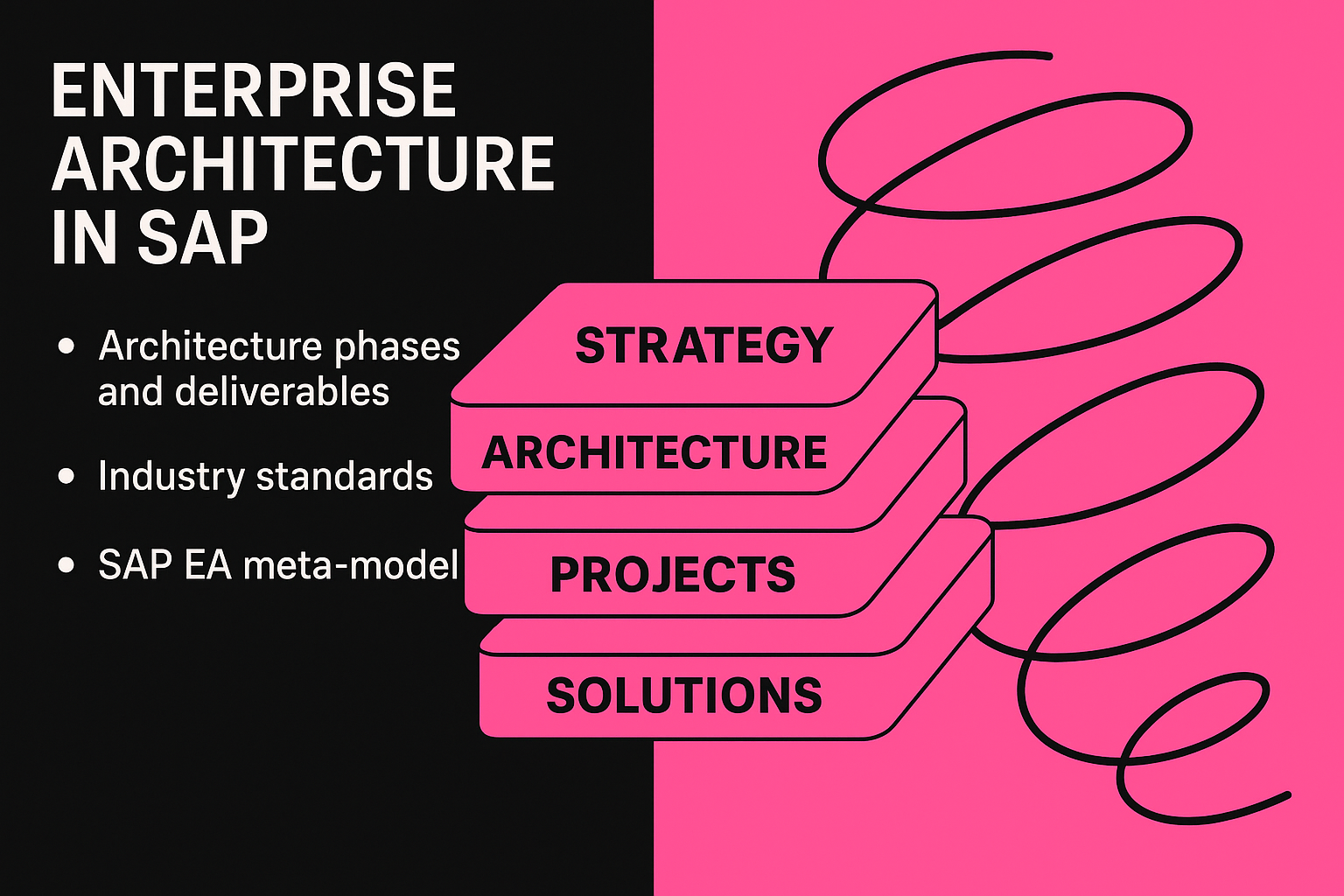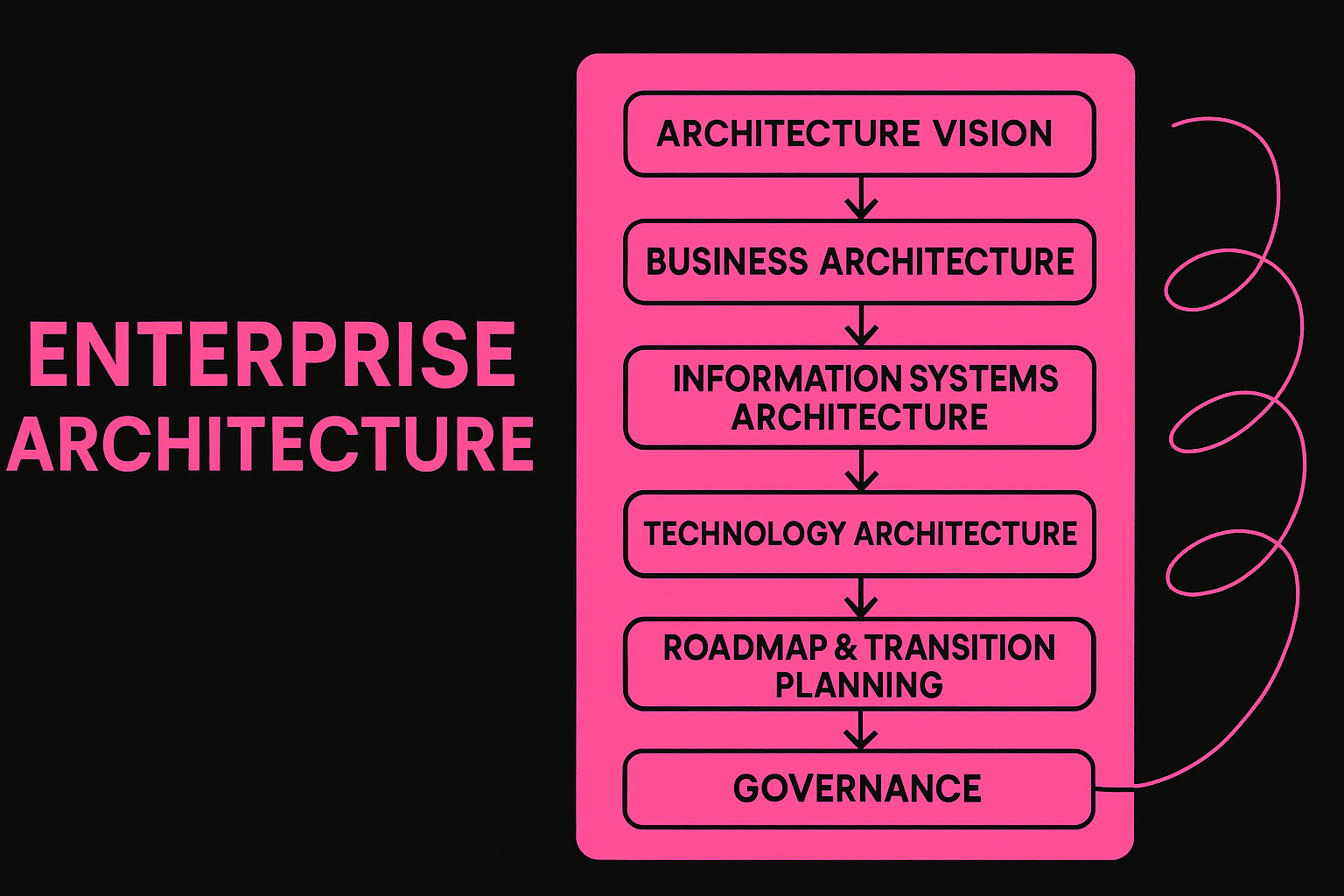Lesson Title:
SAP’s Enterprise Architecture Framework Overview
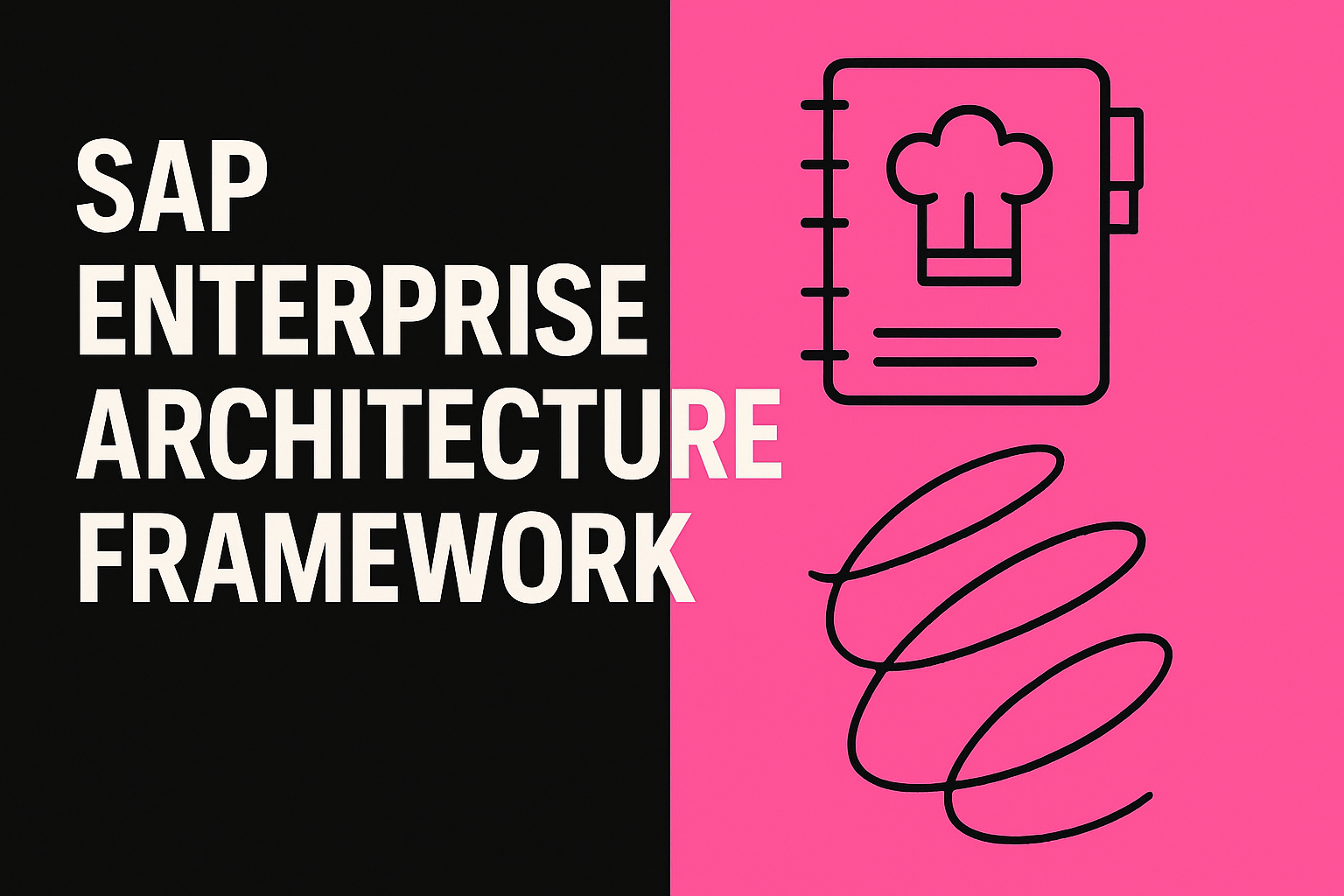
Lesson Description:
Welcome back! In this session, we focus on how Enterprise Architecture (EA) is executed practically using a structured architectural framework, particularly SAP’s Enterprise Architecture Framework. Imagine tackling a complex SAP transformation without clear guidelines—materials and teams become disconnected, causing confusion and inefficiencies. A structured EA framework provides a step-by-step methodology, templates, and best practices to systematically align business strategy and IT capabilities. Through Nestlé’s renowned GLOBE initiative, we will explore how leveraging SAP’s EA framework enabled the global giant to unify processes, data, and systems across more than 100 countries. This real-world example underscores the value of having a structured and proven methodology guiding your enterprise transformations.
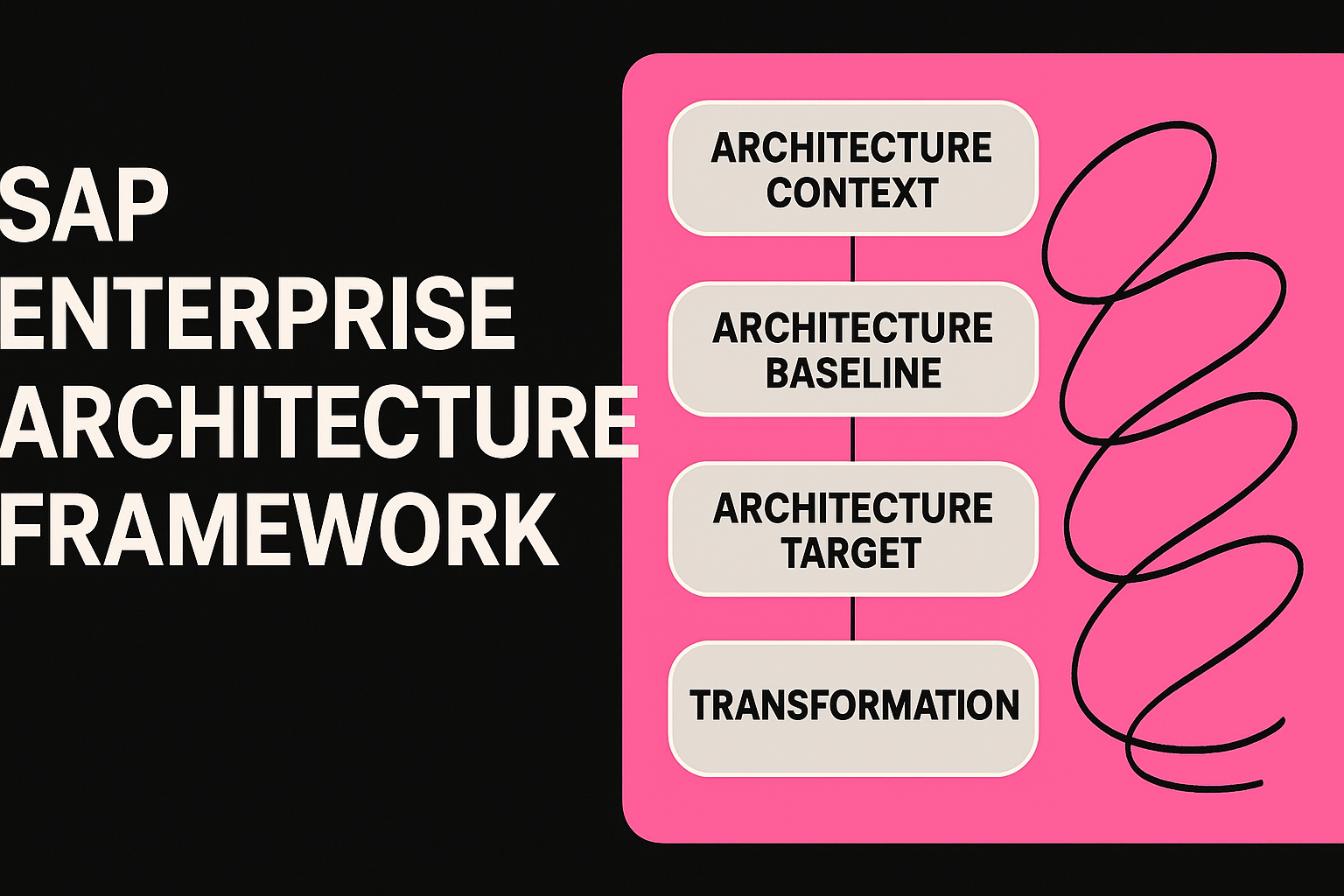
Lesson Learning Objectives:
-
Clearly understand what an Enterprise Architecture framework is and why it’s crucial for SAP transformations.
-
Recognize the practical importance of following structured phases within SAP’s EA methodology.
-
Describe each phase of SAP’s EA framework, from initial vision to ongoing governance, and explain the key artifacts produced.
-
Comprehend the role of SAP’s EA meta-model in maintaining consistency and alignment throughout the architecture process.
-
Identify how a structured EA framework supports strategic alignment, stakeholder collaboration, and effective governance within complex SAP environments.
Terminology:
-
Enterprise Architecture Framework: Structured methodology providing a sequence of steps, templates, and best practices for developing and managing architectures.
-
SAP Enterprise Architecture (EA) Framework: SAP-specific EA methodology tailored for SAP environments, adapted from industry standards like TOGAF.
-
GLOBE Program: Nestlé’s large-scale initiative to standardize global business processes and IT systems through SAP.
-
Meta-model: A structured definition outlining the components and relationships that constitute the enterprise architecture.
-
Artifacts: Tangible deliverables produced during architecture work, such as capability maps, solution blueprints, and roadmap diagrams.
-
TOGAF (The Open Group Architecture Framework): Widely used global standard for enterprise architecture methodology.
-
BPMN (Business Process Model and Notation): A standardized graphical notation for capturing business processes clearly.
Lesson Key Points:
-
Enterprise Architecture frameworks, such as SAP’s EA methodology, provide clear guidance, ensuring that architecture activities are comprehensive and strategically aligned rather than ad hoc.
-
SAP’s EA Framework consists of clearly defined phases, each producing specific artifacts: Architecture Vision, Business Architecture, Information Systems Architecture (Application and Data), Technology Architecture, Roadmap & Transition Planning, and ongoing Governance.
-
Nestlé’s GLOBE program demonstrated the value of using a structured EA framework by successfully unifying fragmented global operations, streamlining business processes, and aligning IT systems with strategic objectives.
-
SAP’s methodology leverages and extends established frameworks like TOGAF, ensuring architects use industry standards while benefiting from SAP-specific guidance, accelerators, and templates.
-
SAP’s EA meta-model underpins architecture documentation, maintaining consistency and integration among various artifacts, enabling clear communication, traceability, and robust impact analysis.
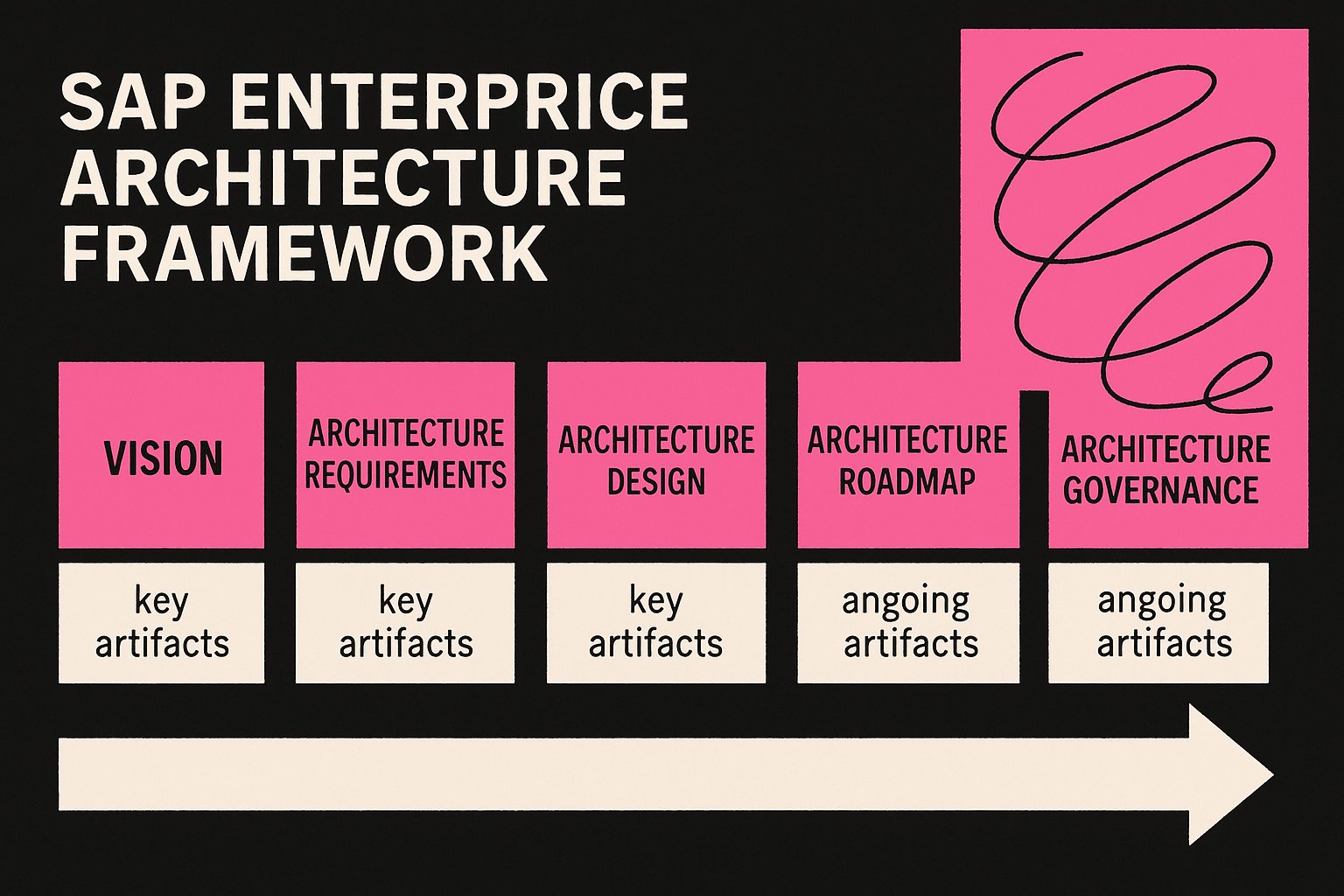
Lesson Summary:
In this lesson, we thoroughly explored SAP’s Enterprise Architecture Framework, a structured, phased methodology adapted specifically for SAP-centric environments. The lesson began by highlighting why using a structured framework is crucial, especially in complex transformations. Through Nestlé’s real-world example, we illustrated how SAP’s framework guided a global transformation, standardizing processes and IT systems for more than 90,000 users across numerous factories and distribution centers. The core phases of SAP’s methodology—Architecture Vision, Business Architecture, Solution (Information Systems) Architecture, Technology Architecture, Roadmap & Transition Planning, and Governance—were each clearly described, emphasizing the artifacts produced in each phase, such as business capability maps, solution blueprints, and detailed roadmaps. Furthermore, the lesson underscored the critical role of the SAP EA meta-model, explaining how it ensures that architectural artifacts remain coherent, consistent, and interconnected, ultimately supporting the strategic alignment of IT investments with business objectives.
Lesson Takeaways:
-
Employing a structured Enterprise Architecture framework is essential for effectively managing complex SAP transformations, ensuring strategic alignment, clarity, and consistency across projects.
-
Nestlé’s GLOBE initiative provides a clear demonstration of the significant business benefits achieved by adhering closely to SAP’s structured EA methodology.
-
SAP’s EA methodology clearly defines a series of architecture phases and associated deliverables, helping organizations methodically translate business strategies into coherent and actionable IT plans.
-
Using industry-proven standards (like TOGAF, BPMN, and APQC frameworks) integrated within SAP’s framework accelerates architecture development and maintains credibility, consistency, and clarity across teams.
-
The SAP EA meta-model serves as the foundational framework connecting all architectural artifacts, ensuring traceability, facilitating clear communication among stakeholders, and enabling robust governance practices throughout architecture evolution.
